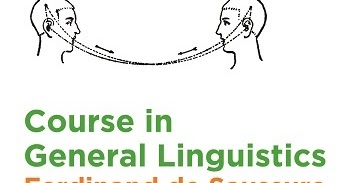

In connection to and in opposition to logocentrism, Derrida introduces “ecriture”, a French term roughly translated as writing – which exists beyond the logos and is characterised by absence and differance, where meaning is constantly under erasure, and does not have the authority of the logos, and is hence anti-logocentric.

Derrida describes logocentrism as the metaphysics of presence, and is opposed to the concept of the centrality of presence, because presence contains within itself, traces of absence, thereby deconstructing its very centrality. “Logos” etymologically and historically means the “Word of God” and by extension, rationality, wisdom, law – all synonymous with power. Derrida called this phonocentrism, a manifestation of the logocentrism, which literally means the centrality of the logos. Saussure privileged speech over writing owing to the subjectivity, authority and presence of the speaker. The most significant of the binary oppositions that has been criticized by Derrida is that of speech and writing. Therefore, it is inferred that meaning is arbitrary and unstable. For instance the sound image “tree” may refer to different kinds of trees or it may even be a metaphor for forest. There is no one-to-one relation between the signifier and the signified. Saussure stressed that the relationship between the signifier and the signified is conventional and arbitrary, and that both terms are psychological in nature.

In Saussure, the previously undivided sign gets divided into the signifier (the sound image) and the signified (the concept).

The most fundamental binary opposition is related to the concept of sign, the basic unit of signification. He questioned the conventional “correspondence theory of meaning” and argued that meaning is arbitrary, and that language does not merely reflect the world, but constitutes it.Īs Jacques Derrida pointed out, Saussure’s theory is based on binary oppositions or dyads, i.e., defining a unit in terms of what it is not, which give rise to oppositional pairs in which one is always superior to the other. Further he challenged the view of reality as independent and existing outside language and reduced tang cage to a mere “naming system”. Saussure illustrated this relationality of language, with the terms paradigmatic axis (of selection) and the syntagmatic axis (of combination), and with the example of 8.25 Geneva to Paris express. Understanding meaning to be relational, being produced by the interaction between various signifiers and signifieds, he held that meaning cannot be understood in isolation. In his Course in General Linguistics (1916), Saussure saw language as a system of signs constructed by convention. Saussure introduced Structuralism in Linguistics, marking a revolutionary break in the study of language, which had till then been historical and philological.


 0 kommentar(er)
0 kommentar(er)
